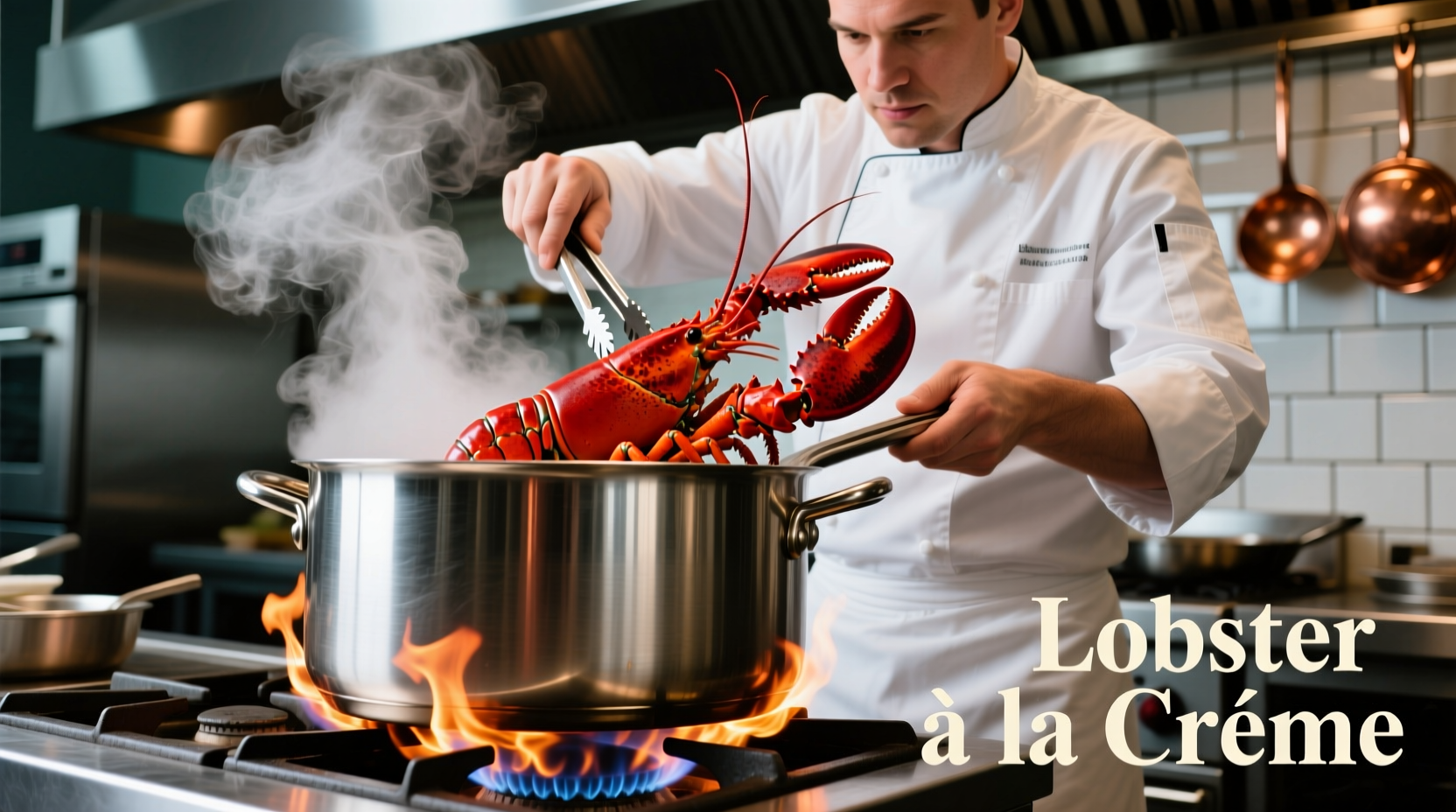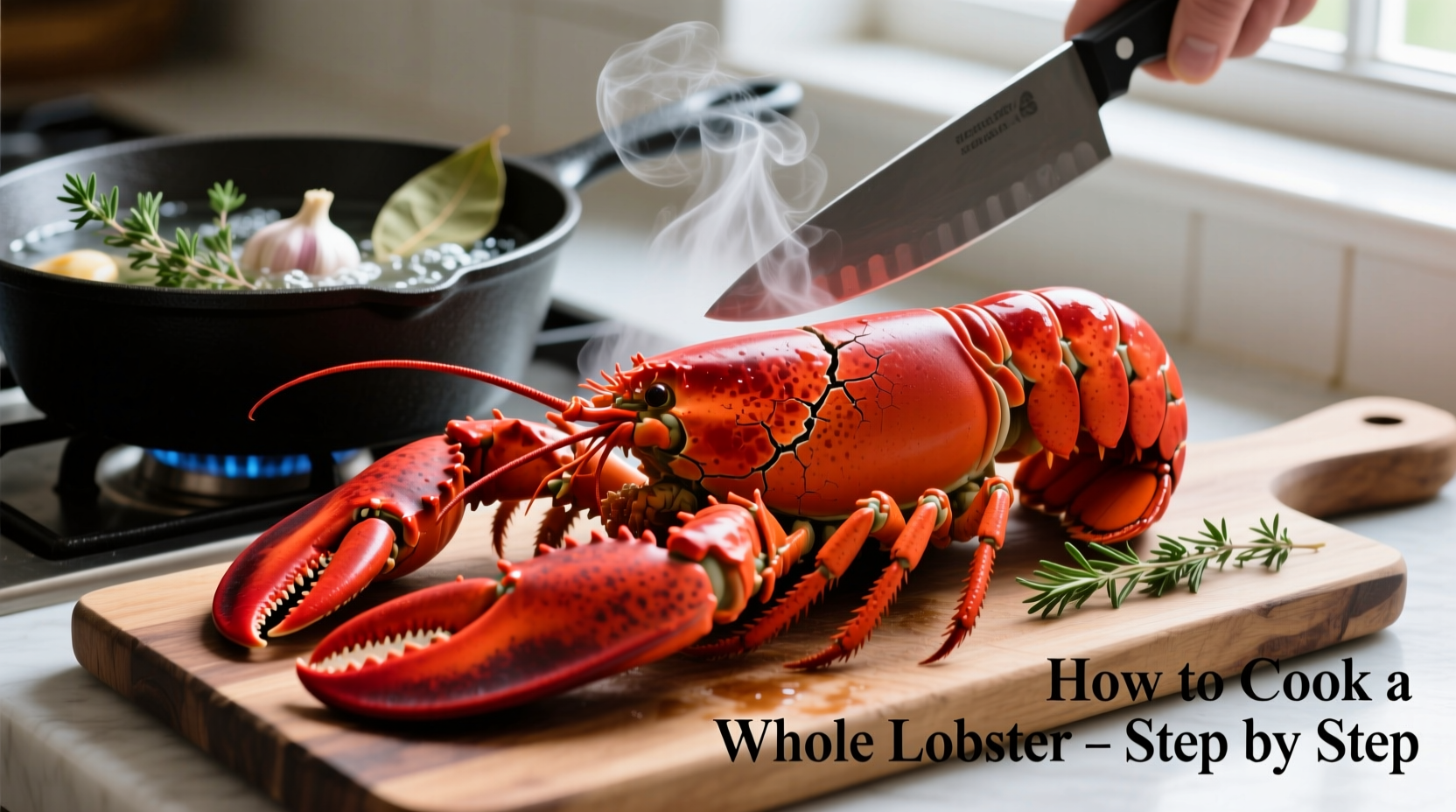Cooking a whole lobster requires selecting fresh live lobster, properly preparing it, and boiling for 8-12 minutes (depending on size) until the shell turns bright red and the meat reaches 140°F internal temperature. This step-by-step guide provides everything you need to confidently prepare restaurant-quality lobster at home.
Why Cooking Whole Lobster Is Simpler Than You Think
Many home cooks avoid preparing whole lobster, believing it's complicated or requires special equipment. The truth? With the right approach, cooking lobster at home is straightforward and yields impressive results. Whether you're celebrating a special occasion or simply craving fresh seafood, this guide eliminates the mystery and gives you the confidence to prepare perfect lobster every time.
Your Complete Lobster Cooking Roadmap
Follow this practical sequence to transform live lobster into a delicious meal. We've organized the process according to how you'll actually work in your kitchen—not just theoretical steps.
Step 1: Selecting and Handling Your Lobster Safely
Start with the most crucial element: fresh, live lobster. Look for active lobsters that curl their tails when lifted—this indicates vitality. Avoid any with sluggish movement or unpleasant odors. The ideal size for first-time cooks is 1-1.5 pounds, which provides ample meat without overwhelming cooking time.
When handling live lobster, grasp it firmly behind the claws using thick kitchen gloves. Never pick up a lobster by its claws or tail alone. According to the U.S. Food and Drug Administration, proper handling maintains food safety and ensures the best texture in your final dish.
| Lobster Size | Recommended Cooking Time | Yield (Meat) |
|---|---|---|
| 1-1.25 lbs | 8-10 minutes | 4-5 oz |
| 1.25-1.5 lbs | 10-12 minutes | 6-7 oz |
| 1.5-2 lbs | 12-14 minutes | 8-9 oz |
Step 2: Preparing Your Cooking Station
Gather these essentials before starting:
- Large stockpot (at least 8 quarts) with tight-fitting lid
- Heavy-duty kitchen gloves
- Long-handled tongs
- Meat thermometer
- Sea salt (1/4 cup per gallon of water)
Fill your pot with enough water to cover the lobster completely, adding 1/4 cup of sea salt per gallon of water. Bring to a rolling boil before adding your lobster. Contrary to popular belief, adding vinegar or other ingredients to the water doesn't improve flavor and can actually affect texture.

Step 3: Cooking Your Lobster Perfectly
Here's the exact sequence for foolproof results:
- Grasp the live lobster firmly behind the claws with kitchen gloves
- Plunge headfirst into boiling salted water
- Cover immediately with lid
- Start timer: 8-12 minutes for 1-1.5 lb lobster
- Check for visual cues: shell turns bright red, meat becomes opaque
- Verify internal temperature reaches 140°F at thickest part
The cooking time depends on your lobster's weight. Larger lobsters require additional time—approximately 2 minutes per additional quarter pound. Overcooking results in tough, rubbery meat, while undercooked lobster poses food safety risks. The USDA Food Safety and Inspection Service confirms that 140°F is the minimum safe internal temperature for crustaceans.
Step 4: Proper Serving and Enjoyment
Once cooked, carefully remove lobster with tongs and drain briefly. Serve immediately with melted butter, lemon wedges, and your choice of sides. Traditional accompaniments include corn on the cob, new potatoes, and a crisp green salad.
To eat lobster properly:
- Twist off claws and legs
- Use a nutcracker for claws, pick out meat with fork
- Separate tail from body, extract tail meat
- Remove small leg meat with fine pick
- Discard the green tomalley (intestine) and red roe unless specifically desired
Step 5: Troubleshooting Common Issues
Problem: Lobster meat sticks to the shell
Solution: This typically indicates overcooking. Reduce time by 1-2 minutes next time.
Problem: Meat appears translucent in places
Solution: Return to boiling water for 1-2 additional minutes until completely opaque.
Problem: Unpleasant ammonia smell
Solution: Lobster was not fresh. Always purchase from reputable seafood markets and cook immediately.
Professional Chef Tips for Exceptional Results
For restaurant-quality presentation, chill cooked lobster briefly in ice water to stop the cooking process while maintaining texture. When serving multiple lobsters, cook them in batches rather than overcrowding the pot, which lowers water temperature and creates uneven cooking.
Consider these flavor variations:
- Add a bay leaf or two to the boiling water for subtle herbal notes
- Brush cooked lobster with garlic-herb butter before serving
- Serve with clarified butter infused with lemon zest
Storage and Leftover Guidance
Store cooked lobster in an airtight container in the refrigerator for up to 2 days. For longer storage, remove all meat from the shell and freeze for up to 3 months. Never refreeze previously frozen lobster. According to culinary research from the University of Minnesota Extension, proper storage maintains both safety and quality of cooked seafood.
Frequently Asked Questions
How can I tell if my lobster is fresh before cooking?
Fresh live lobster should be active with strong tail curling reflex when lifted. The shell should be hard and intact with no unpleasant odors. Avoid lobsters with sluggish movement or ammonia smells, which indicate decomposition has begun.
What's the difference between boiling and steaming lobster?
Boiling cooks lobster faster (8-12 minutes) with more consistent results, while steaming (10-14 minutes) produces slightly more tender meat but requires careful monitoring of water levels. Boiling is generally recommended for beginners due to its reliability and ease of timing.
Is it humane to cook lobster alive?
Plunging headfirst into rapidly boiling water is considered the most humane method by culinary experts, as it causes immediate unconsciousness. Alternative methods like freezing first can cause unnecessary stress to the lobster and potentially affect meat quality.
How do I know when lobster is perfectly cooked?
Perfectly cooked lobster has a bright red shell, opaque white meat, and reaches 140°F internal temperature. The antennae should pull out easily, and the meat should separate cleanly from the shell without sticking. Overcooked lobster becomes tough and rubbery.











 浙公网安备
33010002000092号
浙公网安备
33010002000092号 浙B2-20120091-4
浙B2-20120091-4